News Around NIDDK
NIDDK names new scientific director, translational research director
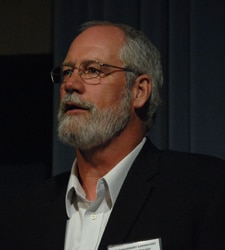
On May 31, Dr. Michael W. Krause (left) was announced as NIDDK’s new scientific director. He has been acting deputy scientific director since August 2011, chief of the Laboratory of Molecular Biology since 2006 and director of NIDDK’s Genomics Core Facility since 2007. He came to NIDDK in 1993 after a postdoctoral fellowship with Dr. Harold Weintraub, an international leader in molecular biology at the Fred Hutchinson Cancer Research Center in Seattle. There, Krause studied developmental gene regulation in C. elegans, uncovering mRNA trans-splicing and MyoD, a master regulator of muscle cell development. He received a bachelor’s degree in biology and doctorate in molecular, cellular and developmental biology from the University of Colorado, Boulder.
“I am looking forward to the challenges and opportunities of the road ahead, and the chance to refocus on the core elements that define a strong and effective institute: great science and great people, synergizing to advance discovery that improves human health,” Krause said.
Known internationally for pioneering research on the transcriptional regulation of cell fate determination in C. elegans , Krause has focused much of his career on muscle cell development. He has also collaborated to study sensors of nutritional flux as they relate to insulin and other signaling pathways, while also exploring novel links to transcriptional regulation. Other studies of cell cycle regulation, RNA modification, neuronal signaling and heme uptake using genetics, cell biology and whole-genome approaches reflect Krause’s broad scientific interests.
“Mike brings to the position a strong commitment to science and teamwork, broad leadership experience and a solid ability to listen, negotiate and make tough decisions,” said NIDDK Director Dr. Griffin P. Rodgers.
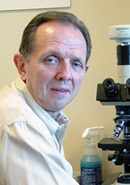
NIDDK Clinical Director Dr. James Balow (right) concurred. “Mike Krause is already an impressively effective spokesman for science and scientific excellence in the Intramural Program. He has an uncanny talent for translating arcane science into understandable concepts that can ignite the interest of a diverse constituency. What better starting point for the scientific leader of a broad-based institute such as NIDDK?” Balow said. “Add to this, Mike’s natural problem-solving skills, decisiveness, fair-mindedness, appreciation of the value of diverse approaches to science, and generosity of spirit all lead me to predict that he will be an exceptionally effective leader and manager of science for NIDDK and for NIH.”
Balow, who had also served as acting scientific director since August 2011, will also take on a new role, with the additional title of director, Translational Research, and the responsibilities to strengthen such programs in the division. He will encourage the transformation of basic scientific discoveries and pre-clinical observations into appropriate clinical investigations, foster mission-oriented multidisciplinary and interdisciplinary team science, and accelerate the movement of promising discoveries and technologies into public-private partnerships.
Minority researchers network going strong after 10 years
By Anne Wright
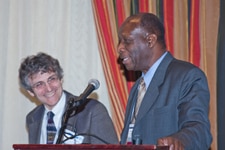
A theme resonated among members of NIDDK’s Network of Minority Research Investigators (NMRI) who gathered for the group’s annual workshop and 10th anniversary celebration in April: receiving and giving back.
A career development network, NMRI aims to increase the number of minority researchers in NIDDK’s mission areas and encourage research on health disparities. Members share best practices to help them succeed as investigators and advance toward tenure.
“I think the network will be here another 10 years, especially if those of us considered junior members give back as much as we’re getting,” said Dr. B. Michelle Harris, an assistant professor at the University of the District of Columbia. “I’d like to help other people who come behind me.”
Mentoring is the linchpin of the network. Between 2009 and 2011, the group increased its mentor/mentee pairs from four to 23. Workshop speakers stressed the importance of mentors in helping new investigators write successful funding proposals and launch research careers.
“If you’re not getting mentored, your chance of success is very low,” said Dr. Jasjit Ahluwalia, associate director for the Clinical and Translational Science Institute Directory at the University of Minnesota Medical School in Minneapolis. He advised new investigators to market themselves and to not discount smaller grants, which could lead to bigger opportunities.
“The NMRI is the type of program that can make a long-term commitment to providing the support for up-and-coming investigators that is necessary if we are to develop the diverse biomedical scientific workforce for solving our important health challenges,” said former NIH Acting Director and current Grinnell College President Dr. Raynard Kington, a past NMRI keynote speaker. “Every major study of our career system’s success in increasing diversity has noted the need for better mentoring. It doesn’t happen overnight, and it doesn’t happen without the infrastructure provided by programs like NMRI.”
“NMRI’s value is in the networking and in a large group coming together like this, as well as in the mentor/mentee liaisons,” said Dr. Carmen Castaneda Sceppa, chair elect of NMRI’s planning committee and associate professor at Northeastern University in Boston. “This meeting gives us a good knowledge of what’s going on and how to apply successfully for a grant.”
Under Dr. Lawrence Agodoa, director of NIDDK’s Office of Minority Health Research Coordination—of which NMRI is a part—the network has grown from a handful of people to 200 strong. During the workshop, members honored Agodoa for his decade of leadership and mentorship. (Agodoa is pictured, right, with NIDDK Deputy Director Dr. Greg Germino.)
The meeting, held in Bethesda, Md., included mock study sections, a poster session and scientific presentations. During the study sections, scientific review officers and experienced researchers who won grants, often after failed first attempts, reviewed sample grant applications and offered feedback.
“What has happened [with NMRI] over the years is remarkable—the continuity, the growth, the membership of young people,” said Dr. Jacqueline Tanaka, NMRI’s first chair and associate professor of biology at Temple University in Philadelphia.
Agodoa hopes to perpetuate NMRI’s cycle of sharing wisdom, saying, “A desirable achievement over the next 10 years would be a markedly increased number of underrepresented minorities in academia serving as role models, and that the network’s members would be instrumental in recruiting the next generation of minority research investigators and nurturing them.”
For more information or to join the network.
New grants aim to understand intrauterine influence, preserve beta cell function
By Amy F. Reiter

Several major new studies are launching this fall to better prevent and treat type 2 diabetes.
One new study aims to follow up on the completed Hyperglycemia Adverse Pregnancy Outcomes (HAPO) study. HAPO looked at about 25,000 pregnant women without diabetes in 11 countries. The study assessed the risk of adverse outcomes in the perinatal period—during and shortly after pregnancy—associated with the full range of blood glucose, excluding women with glucose levels then defined as gestational diabetes. HAPO examined health outcomes including birth weight and umbilical cord c-peptide—a marker for insulin.
The Eunice Kennedy Shriver National Institute of Child Health and Human Development (NICHD) led the original HAPO study, and NIDDK cofunded the study. NIDDK is funding the follow-up study.
“From HAPO, we found that perinatal morbidity in mother and child occurred at lower levels of glucose than were previously thought harmful,” said Dr. Barbara Linder, NIDDK senior advisor for childhood diabetes research. “HAPO showed that maternal glucose has a strong and continuous relationship with fetal growth, body fat, and c-peptide.”
Researchers at 10 of the 15 original sites will now examine whether maternal glucose levels correspond to problems like childhood obesity later on in the children’s lives. They aim to recruit 7,000 mother/child pairs from the original HAPO cohort.
Another goal of the study is to examine a proposed new definition of gestational diabetes, based on the HAPO results, to find out if mothers meeting the new definition but not considered to have gestational diabetes during HAPO also have an increased risk of developing type 2 diabetes.
The Lifestyle Interventions in Expectant Moms study, or LIFE-Moms, will test several lifestyle interventions to control weight gain in pregnant women who are overweight or obese. The investigators will also follow the women and their offspring up to one year after delivery to explore correlations between gestational weight gain and later metabolic status for both mother and baby.
LIFE-Moms has many NIH cofunders, including two divisions within NIDDK; the National Heart, Lung, and Blood Institute; NICHD; the National Center for Complementary and Alternative Medicine; the Office of Behavioral and Social Science Research; and the Office of Research on Women’s Health.
The Restoring Insulin Secretion, or RISE, study is also launching this fall to help improve outcomes for people with type 2 diabetes. The primary goal of the study is to learn ways to preserve beta cell function in people early in the course of type 2 diabetes.
“Eventually the beta cell just stops working and can’t secrete enough insulin to keep up with the insulin resistance,” said Linder. “Many people with type 2 diabetes end up on insulin due to loss of beta cell function.”
Four adult diabetes centers and one pediatric consortium will test interventions to preserve beta cell function in people who have pre-diabetes or are newly diagnosed with type 2 diabetes. Interventions with promising results may then be tested in larger trials.
3 NIDDK intramural scientists honored for 50 years of service
By Anne Wright
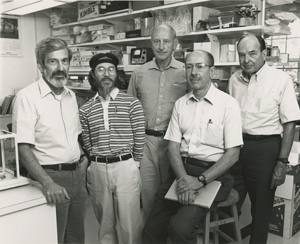
What would keep you at a job for half a century? If the job is at the NIH, there are several good reasons, say three NIDDK scientists who were recently awarded the Health and Human Services (HHS) 2011 Departmental Award for 50 years of service.
Of the 16 employees who received the HHS award in March, 15 work for the NIH—three at the NIDDK. And all three are in the intramural Laboratory of Molecular Biology (LMB).
Drs. David Davies, Gary Felsenfeld and Martin Gellert have been with the LMB since its formation in 1961—and they all still love their jobs. The reasons are simple: they work with friends, they have a lot of independence in conducting their research, and they enjoy plenty of institutional support.
“The NIDDK has been very supportive of our research and has let us find our own path,” said Gellert, a physical chemist. “All of us are grateful for that freedom and level of support.”
After three years at the National Institute of Mental Health in the 1950s, Felsenfeld left the NIH to teach biophysics at the University of Pittsburgh. But when he was asked by the LMB’s founder, Dr. Gordon Tomkins, to return to the NIH to join the new lab, he jumped at the opportunity.
“I was delighted,” said Felsenfeld, also a physical chemist. “I got to work in a lab full of people who were friends and scientifically in tune with each other. We three [Davies and Gellert] have been personal friends—and colleagues and collaborators—all these years.”
The threesome’s basic science research “informs the NIDDK’s and NIH’s understanding of disease and identifies targets for therapy by uncovering the protein machinery needed for the basic process that cells undergo,” said LMB Chief and new NIDDK Scientific Director Dr. Michael Krause. “High-quality and high-impact basic science research lays the foundation of knowledge on which most all disease therapy is based.”
For example, in studying how segments of DNA are controlled from more distant control regions, Felsenfeld noticed an unexpected link between the gene encoding the protein insulin and another gene encoding a protein involved in insulin secretion. This link was present in pancreatic islet cells but not other cell types.
What initially attracted Gellert to the NIH is also what has kept him here. “Working at NIH fits very nicely with the style of research that I like, which is to work with a small group,” he said. “In a university, that’s hardly possible anymore. You need a large group to maintain your funding.”
The three remaining original members of the LMB “have set and maintained the tone for how to do high-quality and high-impact science for all members of the lab,” said Krause. “They also have set the standard for collegiality, mentorship and citizenship in the LMB, NIDDK and NIH. Each is world-renowned as a true gentleman of extraordinary talent over the span of many decades, with remarkable levels of productivity and discovery. Their luster shines a positive light on both the Institute and institution of the NIH, each being an example of the best of the best in basic science research.”
All three are members of the National Academy of Sciences.
Through many of the technological, administrative, and other changes at the NIH over the years, some things have remained constant.
“The nature of my work hasn’t changed,” said Davies, a structural biologist who researches the crystal structure of proteins and has been studying proteins in the innate immune system. Nor has the fondness the three scientists share for each other, their colleagues, and the NIH. “My colleagues are all excellent,” said Davies, whose work has yielded major advances in the field of immunology and informs the basic biology of how infections are first recognized and combated.
“I can’t say what has been most memorable about my career at the NIH,” said Felsenfeld. “Every day I come to work has been a pleasure.”
Common Fund program to expand metabolomics research
By Anne Wright
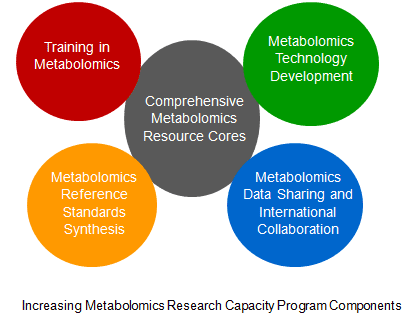
The NIDDK is helping lead the charge to expand metabolomics research across the NIH and the U.S. through a new Common Fund program launched in fiscal year 2012. Metabolomics is the study of small molecules or metabolites found in cells and biological systems.
NIH-funded projects specifically to develop and implement metabolomics technology began in 2004 as part of the Common Fund’s first NIH Roadmap for Medical Research. But sizable roadblocks, such as cost and an insufficient number of metabolomics centers and clinicians trained in using them, have kept metabolomics research from progressing as far as NIH scientists would like.
The field is exciting because it has revealed potential new biomarkers of disease, including recent biomarkers of diabetes risk and novel metabolites associated with cancer, according to Dr. Philip Smith, co-director of the NIDDK’s Office of Obesity Research and deputy director of the Division of Diabetes, Endocrinology, and Metabolic Diseases. Biomarkers help researchers accurately diagnose disease and measure disease changes in response to treatment.
Metabolomics also has a strong potential to enable researchers to go back and forth between clinical and basic research, or from small, detailed clinical studies to large human population studies, offering scientists the best opportunity to understand disease physiology and pharmacology.
“The technique is very powerful,” said Smith. “But there are only a few places in the country that can do this kind of measurement of metabolites, and they are turning people away because they are too busy. Our goal with this program is to increase capacity nationwide to be able to do this.”
One of the program’s initiatives is to fund several new metabolomics core facilities, which likely will piggyback on existing sites that have some infrastructure and expertise already in place. Another is to train more scientists who can do this kind of research and educate clinicians in the disciplines needed to properly design metabolomics studies to obtain high-quality data—and interpret the results.
“Metabolomics requires a certain kind of complex training,” said Smith. Investigators need expertise in disciplines such as biochemistry, molecular biophysics, statistics, and human metabolism.
The program’s other goals are to develop metabolomics standards and technologies that will reduce the cost and effort of analyzing study data.
The National Cancer Institute; National Heart, Lung and Blood Institute; National Institute of General Medical Sciences; and National Institute of Environmental Health Sciences have joined the NIDDK in leading the metabolomics effort; 10 other Institutes are also collaborators.
The NIH Common Fund supports cross-cutting, trans-NIH programs that encourage collaboration across NIH Institutes and Centers. Common Fund programs address key roadblocks in biomedical research that impede basic scientific discovery. For more information about the metabolomics program, click here . Researchers may contact Smith.
Rare body fat disorders workshop sheds light on obesity research

Researchers gathered at NIH in Bethesda, Md., on March 1–2 to gain new insights into the complex causes of obesity during the “Workshop on Rare Syndromic Body Fat Disorders: What Can They Teach Us?”
By studying rare disorders that affect the amount and distribution of body fat—including Prader-Willi syndrome, WAGR syndrome, and various lipodystrophies—researchers may uncover genes and biological pathways that regulate appetite and contribute to the more common forms of obesity and its adverse consequences.
Workshop attendees included basic physiology researchers, geneticists, fat cell biologists, clinical scientists, and clinicians. They heard updates about the state of the science in obesity research and NIH programs relevant to their research.
The workshop highlighted areas of research opportunity, including:
- development of new therapeutics to treat gene regulation disorders underlying rare obesity syndromes
- generation of cellular models of human genetic diseases
- genome-wide sequencing and exome analysis of people with extreme phenotypes, specifically those classified as rare syndromic body fat disorders
Research on rare body fat disorders is part of the 2011 Strategic Plan for NIH Obesity Research. The plan, which NIDDK had a leadership role in developing, emphasizes moving the science of obesity research from the laboratory to practical solutions.
A summary of the workshop will be posted on the NIDDK website.

